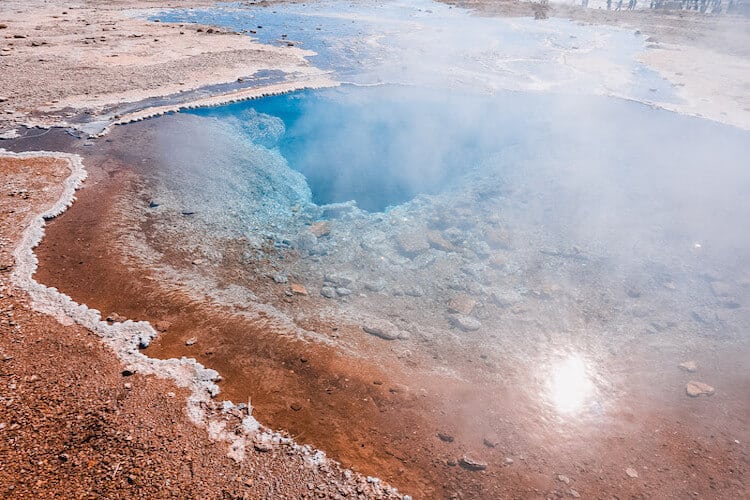Iceland in April: A Complete Guide
Planning a trip to Iceland in April? Keep reading discover all you need to know when visiting this magical Nordic country in spring.
Iceland is one of the most naturally beautiful and enchanting countries on earth. In very few other places will you find so many natural wonders and phenomena to be discovered.
However, many people think Iceland is too cold to visit and believe the freezing temperatures will make the adventures unenjoyable. But this could not be more wrong as Iceland is not nearly as cold as you may think the whole island stays relatively mild all year long.
April is one of the two months of spring in Iceland and is a great month to visit. During April there are a ton of things to do and see with no shortage of activities.
Here is everything you need to know about Iceland in April to start planning your adventures.
(Disclaimer: Some links in this post may be affiliate links, meaning if you click on the link and make a purchase, I receive a small commission. This is at no extra cost to you and you may even receive a small discount. See disclosure for more information.)
Iceland in April: Complete Guide
In This Post
Weather in Iceland in April
The weather in April is not that of typical spring temperatures, but quite mild nonetheless. In the capital city of Reykjavik, you will get highs of 7°C and lows of 1°C. Along with these mild temperatures, you can expect a wide range of weather conditions from rain, to run, to even snow if it gets cold enough!
However, in April the days become much longer and brighter than during the winter, and the light is very welcome.
Why Visit Iceland in April
April is one of the best months to visit Iceland. This is when you can expect brighter, longer days with more sunshine hours to enjoy activities. Plus, the mild temperatures allow for more outdoor activities and make outdoor activities more enjoyable.

More so, April is one of the two spring months in Iceland, which is a time that offers the best of all seasons.
The ice begins to melt making the waterfalls roar with powerful streams of water, the landscape becomes greener, flowers bloom and animals that have hidden for the winters to come back to say hello! Plus at the beginning of the month, you have the opportunity to see the Nothern Lights.
All of the beauty, things to do, and mild weather make April the perfect time to visit Iceland.
Things to do in Iceland in April
Visit the Blue Lagoon
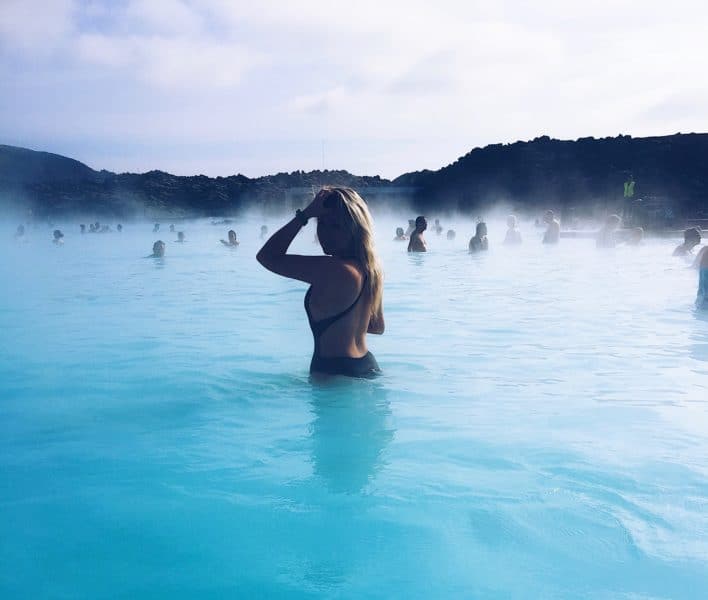
The Blue Lagoon is something you must do while visiting Iceland. Although it attracts quite a bit of tourist, the Lagoon is very large and doesn’t feel crowded in the slightest. Experiencing the geothermically heated waters is an experience you don’t want to miss.

The lagoons pools are formed from lava stone and the water is heated by the geothermal temperatures. This is one of the 25 wonders of the world and offers a transformation spa experience.
The price is around 60 euros for as long as you want, and with this, you get a towel, a free drink, and a free facemask. It is more than enough to have an amazing spa experience in an environment unlike anything else.
BONUS: Head to Hrunalaug hot springs for an off the beaten track hot spring adventure!
Drive the Gold Circle
The golden circle is one of the most famous routes to drive along in South Iceland. This route brings you to three famous spots – Thingvellir National Park, Strokkur Geysir, and Gullfoss. The route takes around 8 hours to fully complete and can be done by renting your own car or finding a tour company. Nonetheless, the entire journey is breathtaking and something you do not want to miss.
Thingvellir National Park
The first stop along the way is Thingvellir National Park. This is a UNESCO World Heritage site that offers both historical and geographical significance. Since 930 AD this park has been a meeting place to settle Icelandic disputes and to this day is the longest-running parliament in the world.
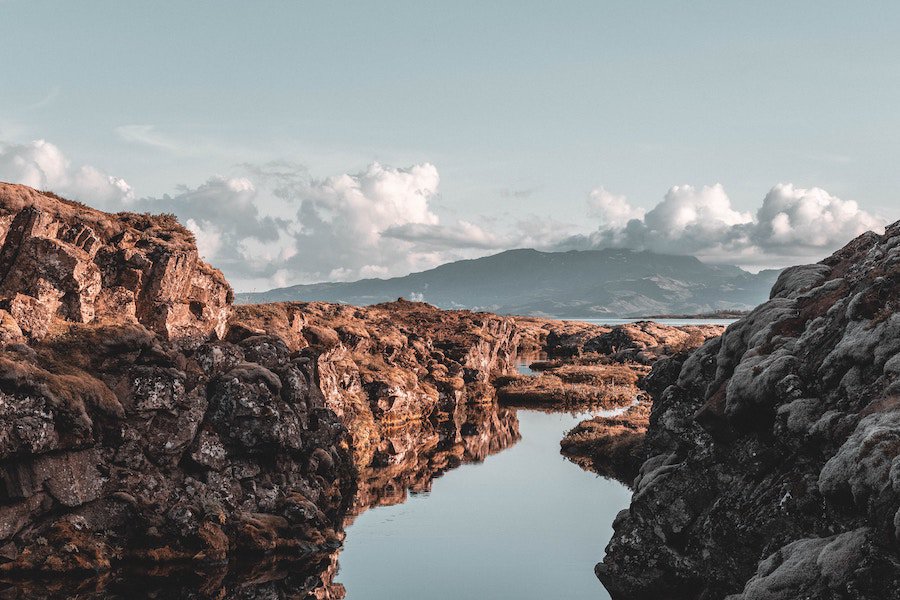
More so, Iceland is located on the mid-Atlantic rift and is the only place on earth where this rift is above sea level. Meaning that some of Iceland’s land is located on the North American tectonic plate and the other part if on the Eurasian. In Thingvellir National park the two tectonic plates can be viewed most clearly.
Strokkur Geysir
The second stop is to the Geysir hot springs along the Golden Circle route. Here you will find a landmine of boiling water pits that explode steaming hot water every few minutes.
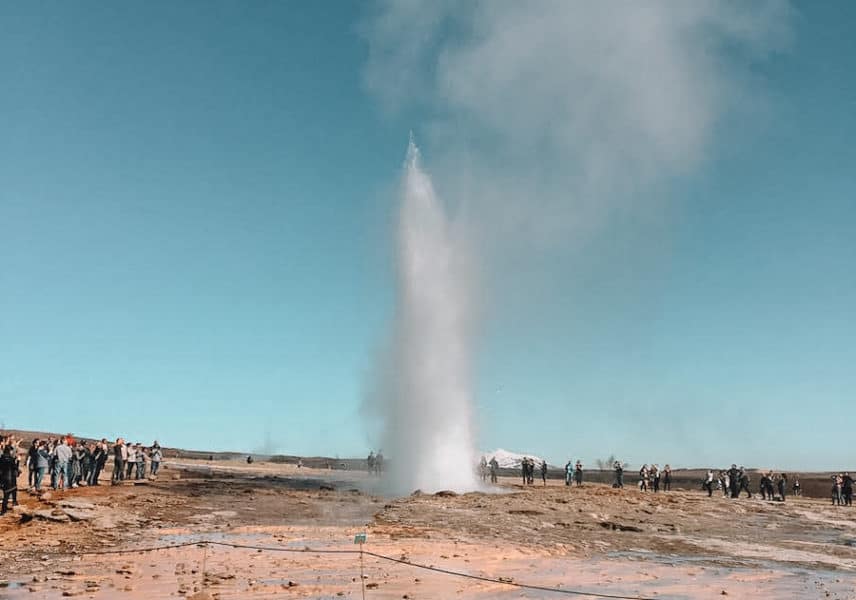
The entire Geysir area is interesting to look at and admire but Strokkur Geysir is the real attraction. This Geysir has a grand explosion of hot water 30 meters into the air every few minutes. It truly is an amazing natural phenomenon.
Gullfoss

The last stop on the Golden Circle tour is the Gullfoss waterfall. This is a huge waterfall that has a drop of 35 meters and has a staggering amount of power. In Iceland in April Gullfoss waterfall’s power os only amplified as the warmer temperatures melt the glacier that feeds it. Therefore the amount of water rushing down the steep fall is greater than normal.
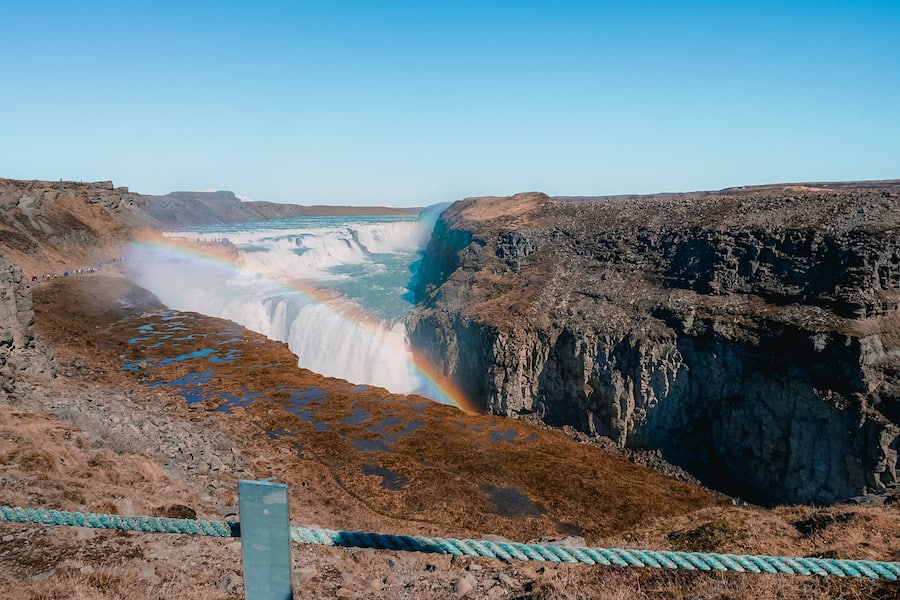
Explore Reykjavik
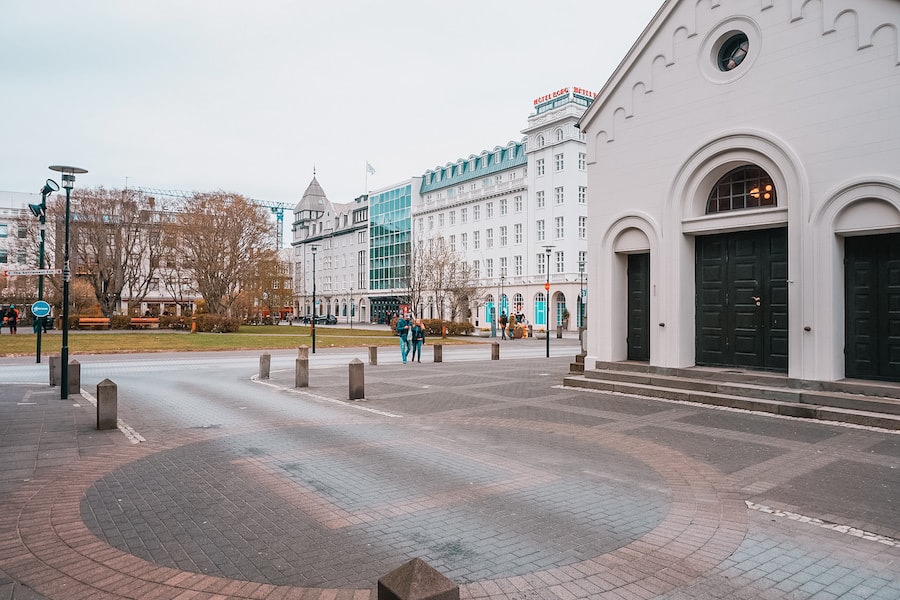
Many people come to Iceland and quickly head straight for the wilderness and nature areas of the country. As a result, they miss out on the opportunity to explore the capital city of Iceland Reykjavik.
The city of Reykjavik is a beautiful place to see filled with fun things to do, cute streets, and tasty cafes. It is quite expensive – like most things in Iceland – but you can find some very exciting things to do and charming areas to explore. Exploring Reykjavik is an Iceland travel must-do!
Do a Sólheimajökul Glacier Hike

Sólheimajökul is a famous Glacier located in Southern Iceland. It is a popular attraction for visitors due to its great location and vast size. When visiting this glacier you have two options, one admires it from a distance, or two, hike it!
Hiking this massive glacier is an experience like no other, and can only be done with a tour guide who has all the necessary equipment. A full hike takes around 3 hours and the tour guides make the experience beyond memorable and exciting.
Check out these tours below and book beforehand so everything is arranged before you arrive.
View the Northern Lights

The northern lights are an amazing natural phenomenon that can be viewed in Iceland for half the year. For the first half of April, the Northern lights can still be viewed in Iceland. However, after the middle of April until mid-August Iceland experiences no darkness, therefore, the northern lights cant be seen.
If you are visiting this amazing country and want to catch the northern lights, be sure to arrive in early April for the best chances.
See Puffins
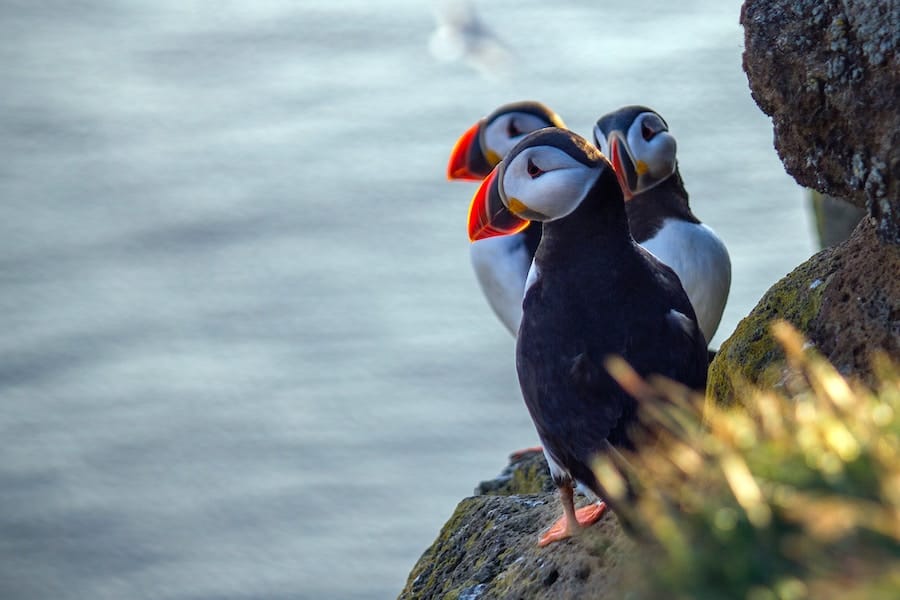
Icelandic puffins nest on the coast of Iceland in April and spotting them can be done in a number of ways. If you head to Látrabjarg – the most western part of Iceland – you will be welcomed to an area that has the largest puffin population. You will find them perched in the cliff sides or sitting in the grass, always looking photo-ready.
Consider taking a tour to catch a glimpse of the puffins. The tour guides know the best places to go and can ensure you don’t get yourself in a dangerous position.
Whale Watching
The best place to go whale watching in Iceland is in the north and in Iceland in April the roads to the north have started to clear up making the journey much easier. Just be sure to check the road conditions before embarking on the journey.
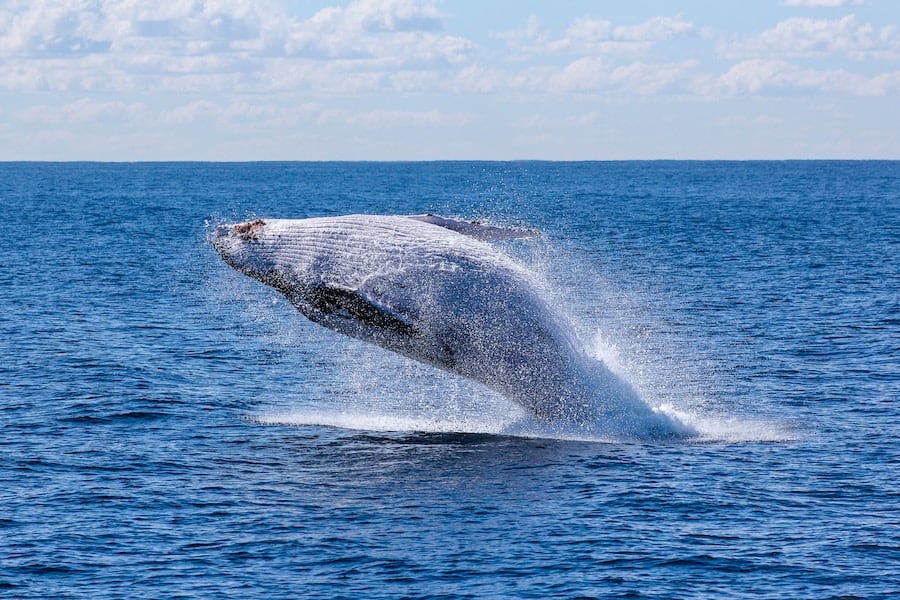
A great place to head to for whale watching is in Akureyri. Here you will find various tours that will show you a ton of different whale species. However, you can also take a boat from the Reykjavik harbor if you don’t want to venture up north.
Waterfall Explorations

There are more waterfalls in Iceland than just Gullfoss along the Golden Circle. In fact, there are quite a few waterfalls to be discovered that are especially beautiful in Iceland in April.
One of the most grand is Seljalandsfoss waterfall which drops 65 meters and has a powerful stream of water during the month of April. What makes this waterfall even better is that there is a path behind it and you are able to fully walk around it and observe its power from all directions.
Black Sand Beach

The Black Sand Beach is a stunning beach in Iceland that is characterized by its jet black sand that fills the shore. The beach is great to admire from a distance to see the vastly unique dark beach, but it is also great to walk along yourself.
In addition to the black sand on the beach, you will also find large basalt column caves that are beyond unique. Just be careful near the water, the waves and currents are strong and can suck you in without notice.
Where to Stay in Iceland
In Iceland, in April I recommend setting up a base in Reykjavik. It is the perfect central hub near the airport and surrounded by restaurants and stores. Use the map below to find your ideal accommodation that fits in your budget.
Booking.comIf you are planning a trip to Iceland in April use this post as a guide to ensure you hit all the best things to do during this magical month.
Like this post? PIN it for later!
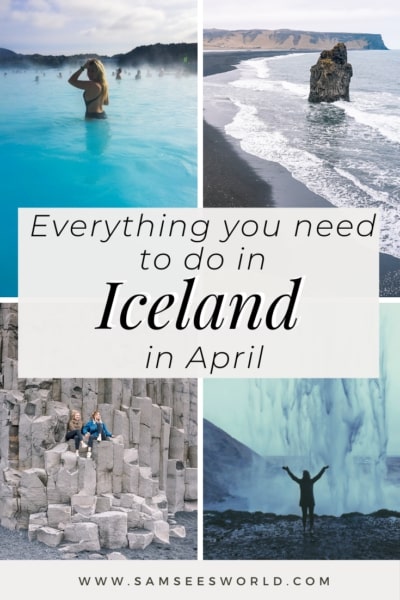
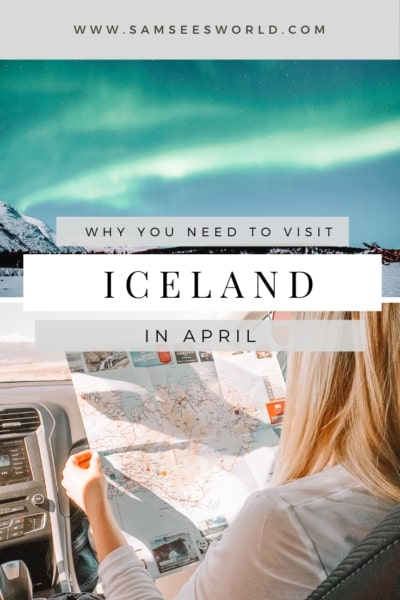
Love,
SSW
